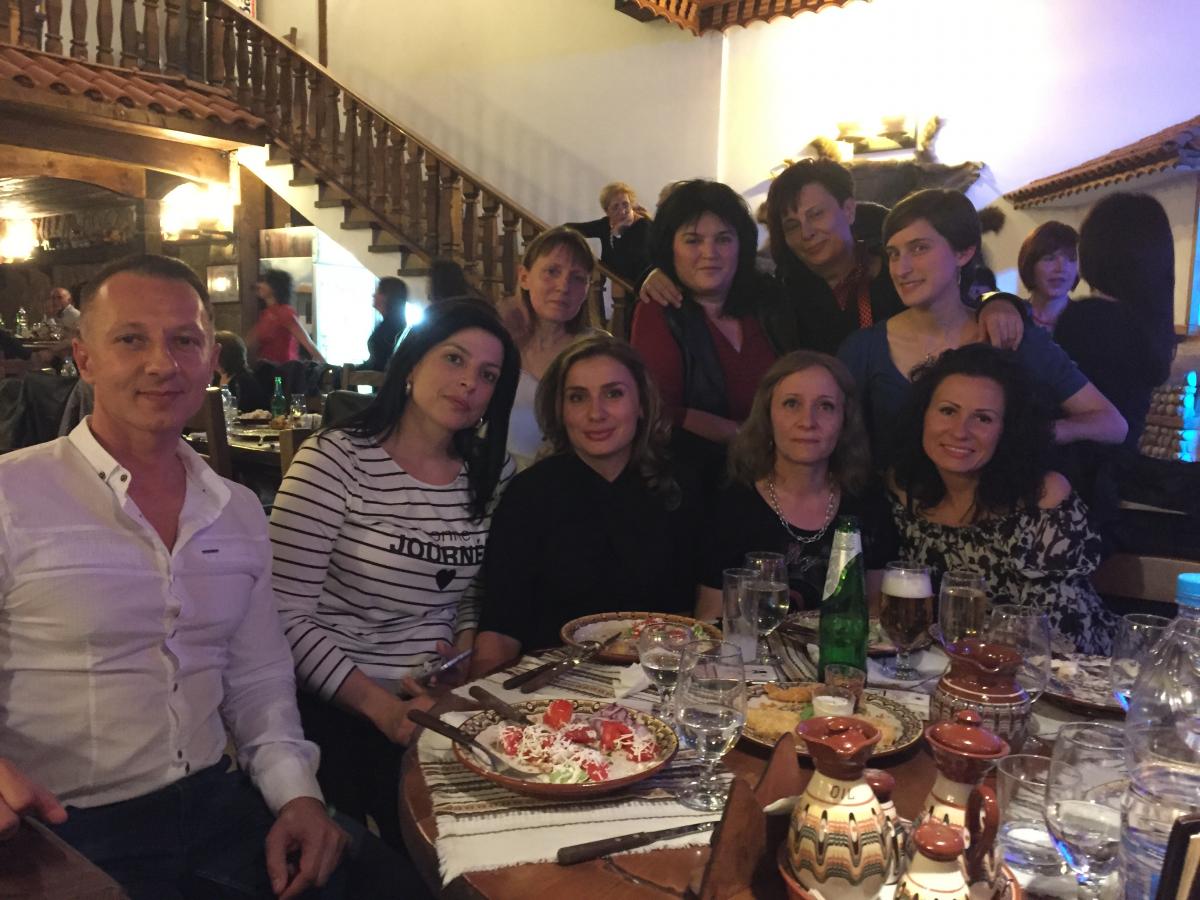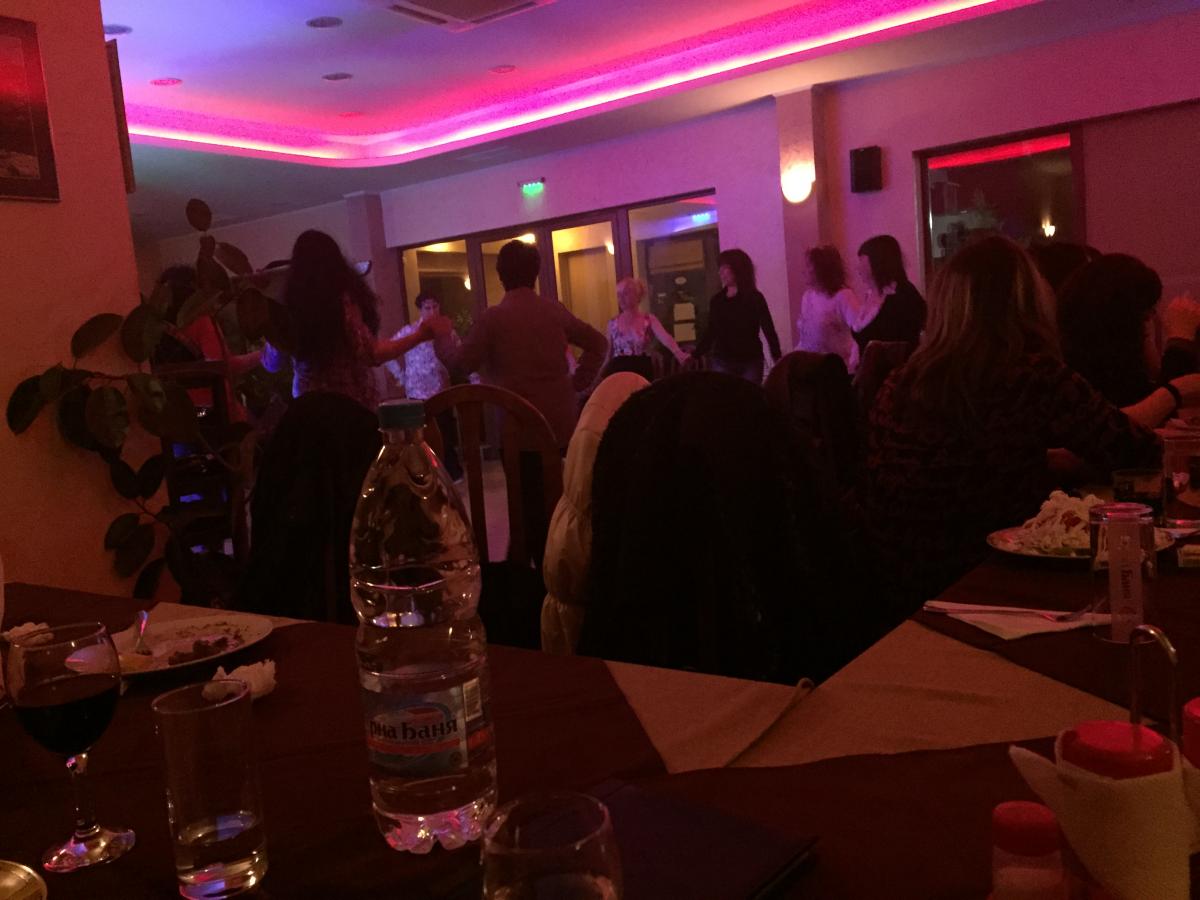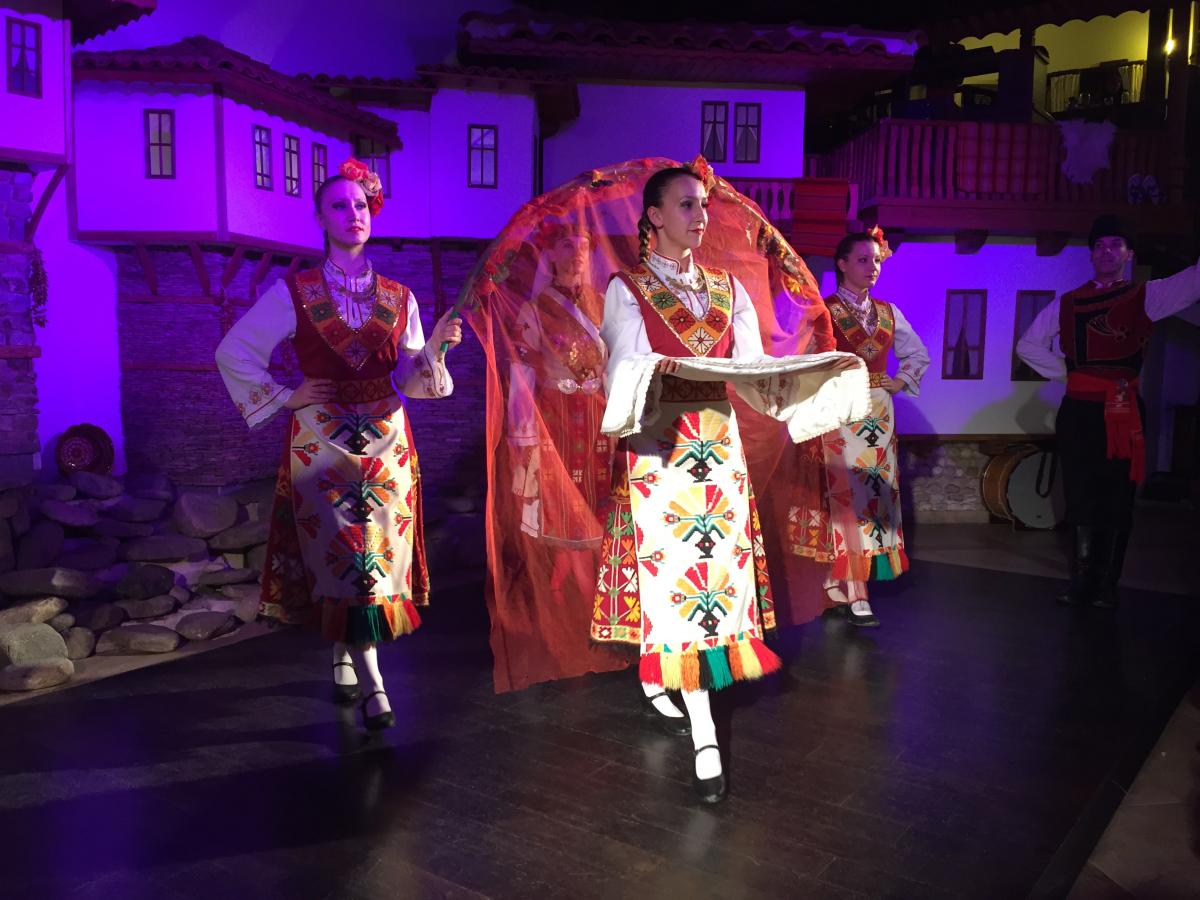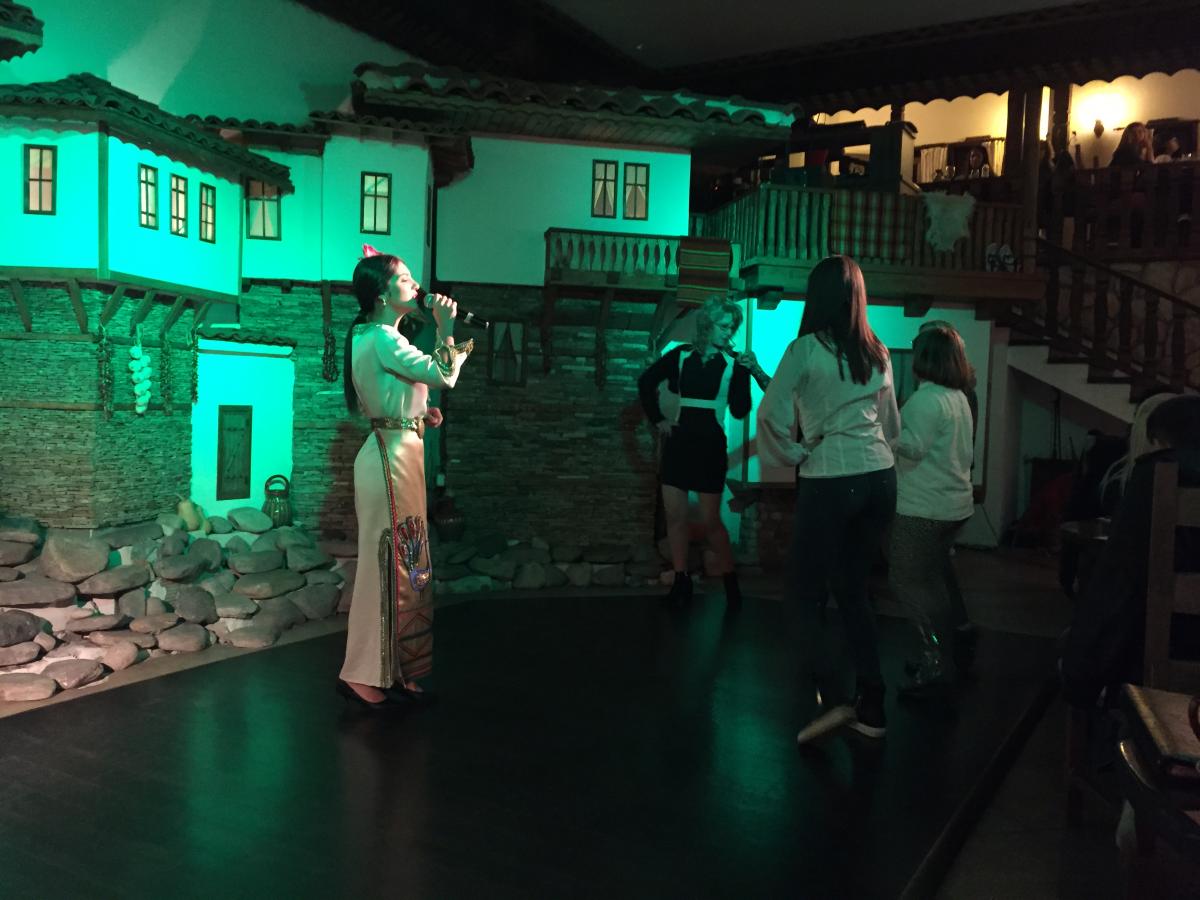Shortly after beginning the dance class that I wrote about back in October, I decided to continue searching for a supplementary amateur class outside of the Academy. The first one I checked out, which meets Tuesday and Thursday nights at the Cultural Institute of Plovdiv, is organized by the Chanove Club. Though it is right down the hill from the Academy, which would have been a perfect location, and though it was definitely geared towards beginners, the group was quite large and the atmosphere seemed more like what I would expect from an exercise class at a gym than at a social dance. I had several neighbors squeeze my hands uncomfortably tightly in the horo line, and one man who insisted that men’s hands are always both underneath their neighbors’ rather than in the over-under pattern I am familiar with. (Have any of you ever heard of this “rule”? Since I am fairly novice, and the majority of my horo lines have always been women, there’s a chance I’m wrong.)

Though I had expected another beginner’s class, it turns out that most of the women in the group have been dancing together for three or four years. But I couldn’t have asked for a better group of classmates. There are about 10 of us, maybe closer to 8 on an average night. Though we can barely communicate at all verbally, they have truly welcomed me with open arms. The positive energy is infectious as they tease each other and our teacher, and I find myself blushing each time they congratulate me for learning a new dance. “Bravo, Rachel!” Once, a classmate went so far as to call me “най-добрият ученик!” :)
At the beginning of November, my classmates somehow managed to explain to me that on the 13th we would go to a restaurant together. At first, the name of the restaurant sounded to me like a mispronunciation of McDonald’s, so I wondered if going to Mickey-D’s is a more formal experience in Bulgaria than back in the States. It also sounded to me like there was going to be some kind of performance, so I wondered if we would be going to a show after the fast food. Maybe our teacher was performing. Rather than try to explain to me how I could find the place, one of my classmates agreed to meet me at the Avtogara Yug.
The place was actually called Megdana. The wait staff, dressed in traditional clothing, served large groups sitting at long tables. I don’t know if it was a special night dedicated to dance classes, or if there is an alternate explanation, but many of the guests seemed to be groups like ours. A Bulgarian flag hung from the rafters. After an hour or so of Shopska salads, rakia, and chatter, there was a performance. In front of a backdrop built to invoke quaint village life, the performances alternated between a pair of singers and a dance group.
As the evening progressed, guests began to get up from their tables and join in the dancing. Eventually the performance ended, and it was just guests stepping to the sounds of the DJ. The music was primarily Balkan folk music, though it may have not been exclusively Bulgarian, with a few exceptions – a handful of slow dances and even a horo danced to something more pop-esque. Like at the campaign event in Trud, almost all of the dancers (except during the slow partner dances) were women, and they were fairly diverse in age. I’m not sure how late it lasted; the dancers still seemed to be in the warm-up phase when I left around midnight.
The next time our class met, my classmates explained to me that one of the other groups who had been at Megdana had invited us to come dancing at a restaurant in their village, Krichim, not too far outside of Plovdiv. So yesterday evening I braved the rain and caught a carpool with a couple of my classmates. We joined the other group at a long, L-shaped table in the otherwise empty Арияна Bar and Grill. I found it interesting that, rather than mingling and mixing up the seating arrangement, each group sat at its own end of the table.

From these two experiences, as well as conversations with other dancers and musicians, I have come to a surprising pair of realizations – at least in/around Plovdiv, 1) there does not seem to be much (if any) regular social dancing to live music and 2) most social dancing occurs at restaurants. This is very different from what the Balkan dance scene in the US had led me to expect. It also seems to me like dancing is not seen so much as an opportunity to meet new people, but rather to go out and have fun with people you already know. This last statement is still very much an unsubstantiated hunch. I would also guess that dancing is often learned through participation in classes and ensembles, and not so much at the dances themselves. I guess this makes sense; it might be odd for a restaurant to announce, “30 minutes before dinner, you can come for a free dance lesson!”
Though I must admit these realizations leave me feeling a bit disappointed, it is nice to know that it wasn’t just poor research skills standing in the way of my finding regular social dancing with live music! I will update the lists below throughout the remainder of my stay, in case any of you travel in Bulgaria and want to find some dancing.
Restaurants I have visited that regularly have music and/or dancing:
Megdana (DJ) - Plovdiv
Сите Българи Заедно (live music) - Sofia
Restaurants I have not visited that might have music and/or dancing:
XIX Век (live music?) - Plovdiv
Manastirska Magernitsa Restaurant (live music, no dancing) - Sofia

